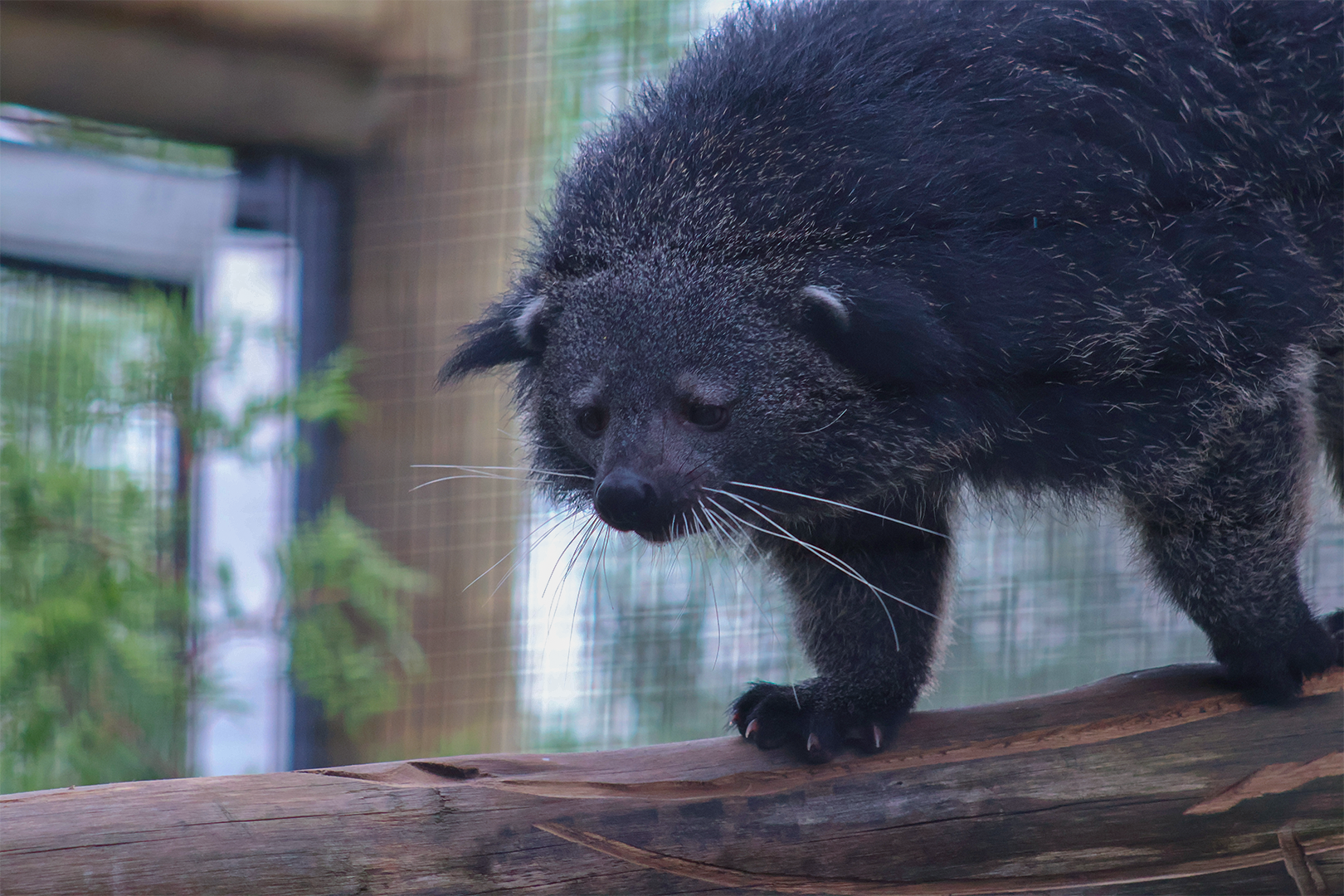I LIVE IN ASIA
The binturong is native to rainforests and other dense forest areas in southeast Asia including Nepal, India, and Indonesia. This species spends most of its life up in the treetops, using its long, prehensile tail to move from tree to tree.
I AM AN OMNIVORE
Binturongs eat a wide variety of foods. They will eat plant material such as fruits, vegetables and plant shoots, but this species will look for birds, small mammals, and fish to consume as well.
BINTURONGS ARE SOLITARY
The binturong is a solitary animal and is happiest when by itself. However, they do communicate with one another through growls, purrs, and their unique scent.
DO YOU SMELL THAT?
This unique animal is easily identified by the odor it gives off. This odor, produced by their scent glands and used to mark territory and attract mates, smells like buttery popcorn!
HELPING THE BINTURONG IN THE WILD
By visiting the Fort Wayne Children’s Zoo, you are supporting local, regional, and global conservation. A portion of every ticket sold goes towards conservation of wildlife and wild places. Each year, the Fort Wayne Children’s Zoo donates over $250,000 to our conservation partners.
I AM IMPORTANT TO MY ECOSYSTEM
Because of their omnivorous diet, the binturong has two very important roles in their ecosystem. Because they eat a lot of fruits and other plant materials, they are crucial for seed dispersal and boosting biodiversity in their environment. As a predator that hunts smaller animals, they also are help keep certain animal populations balanced within the ecosystem.

